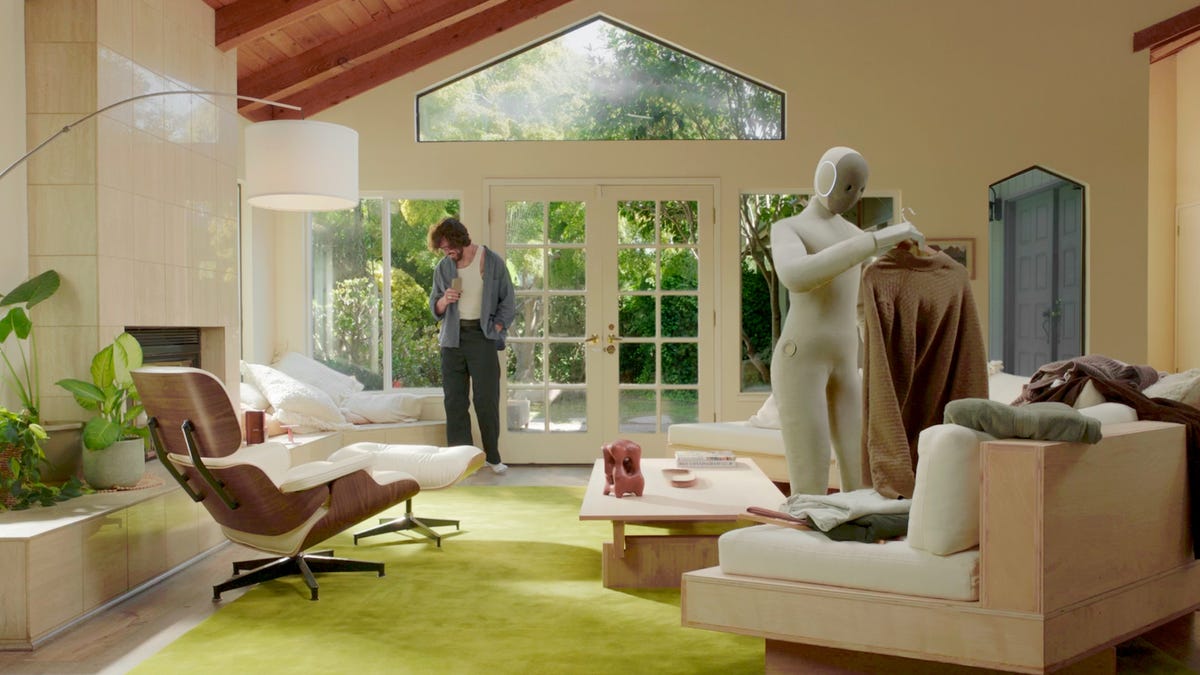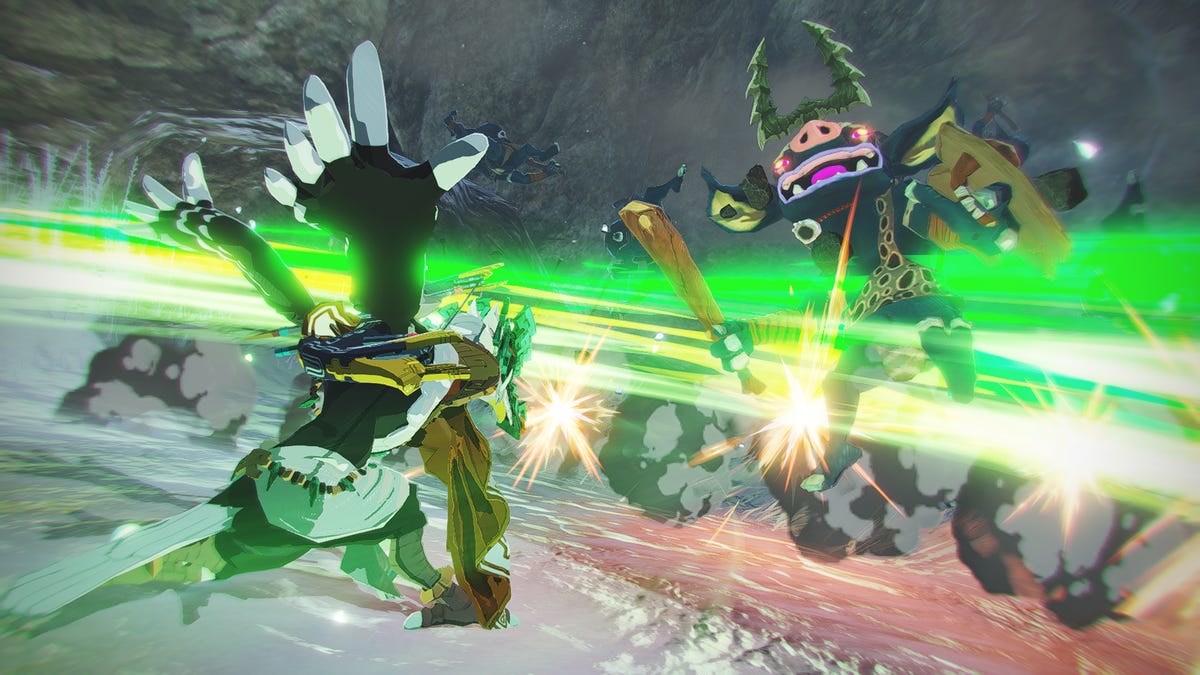Technologies
Galaxy S23 Ultra’s Secret Weapon Could Be This New Samsung Chip
Exclusive: Samsung’s Isocell HP2 image sensor can shoot photos at 12.5, 50 or even 200 megapixels thanks to new pixel binning options.

With its new 200-megapixel Isocell HP2 image sensor, Samsung will try to give smartphone photographers the best of both worlds: high resolution and good image quality in challenging conditions.
The HP2 is in mass production. Samsung has neither announced its shipment date nor confirmed which phone it will arrive in. Still, the sensor is expected to power the main camera on the company’s flagship Galaxy S23 Ultra phone, likely to debut Feb. 1.
Image sensor designers face a tradeoff. Increasing resolution means each pixel on the sensor is smaller, and smaller pixels aren’t able to gather light as well. That means shots taken in low light are marred by noise speckles. They lose detail in shadowed parts of a scene. And they suffer blown-out highlights in bright areas like skies.
The HP2, though, brings new methods to counteract those problems and make the most of each photon of light, Samsung revealed exclusively to CNET.
The South Korean electronics giant’s sensor can gather light more effectively in the first place, boost high dynamic range (HDR) photos to cope better with scenes with dark and bright elements, the company said. And when shooting at the full 200-megapixel resolution, Samsung uses AI technology to help render the finest details.
It’s not yet clear how well the sensor will perform in real-world testing. But it’s no surprise Samsung is focusing on the technology. Camera improvements are a prime reason to upgrade phones, with better photos and videos more noticeable than marginally better processors, battery life and network technology.
«The full 200MP resolution especially shines when shooting at concerts or outdoors where there’s lots of detail to be captured,» said JoonSeo Yim, executive vice president of Samsung Electronics’ sensor business. «It may not be the predominant setting for most consumers, but we definitely see the need for highly detailed images.»
Apple, Samsung’s top smartphone rival, is likewise investing heavily in its cameras. Comparatively large lens elements protrude from the back of iPhone 14 Pro models to show off camera performance, and Apple has upgraded its sensors for better high-resolution and low-light shooting.
Better pixel binning options
One of the headline techniques for improving smartphone photos is called pixel binning. With it, groups of physical pixels can be combined into larger virtual pixels that gather more light when it’s dim, trading off resolution for lower noise and better color.
Samsung isn’t alone in using pixel binning. You’ll see it in the Apple iPhone 14 Pro, Google Pixel 7, Xiaomi 12T Pro and other phones, but the HP2 sensor is one of the most advanced. Apple and Google, for example, use 2×2 pixel binning that turn four physical pixels into one virtual pixel. Samsung’s flagship Galaxy S22 phones have offered 3×3 pixel binning since 2019, offering 108 megapixel photos in good light and 12-megapixel photos when it’s dim.
Samsung’s HP2 can take 200-megapixel photos under good conditions. When it’s dimmer, pixel binning groups pixels into 2×2 chunks for a 50-megapixel image. And when dimmer yet, Samsung’s 4×4 «Tetra2pixel» chunks take a 12.5-megapixel photo.
The two levels of pixel binning were available on the 200-megapixel HP3, announced in 2022. However, the HP3 uses smaller pixels that, while minimizing camera bulk, aren’t as good at capturing light in the first place. The HP1, announced in 2021, also had it. But the HP2 adds some other tricks the HP1 lacks.
Pixel binning ups and downs
Pixel binning has some other advantages. Cameras can crop in on the central portion of the image to zoom into more distant subjects. It’s a key foundation to the effort to give smartphones zoom abilities like traditional camera lenses. Pixel binning also opens up new options for high resolution 4K and 8K video.
Pixel binning has downsides, though. It takes a lot of battery power to process all those pixels, and storing high-resolution photos gobbles up a lot of storage space. And high-resolution sensors, while nice in principle, don’t achieve top image quality unless they’re paired with high-quality lenses.
«The full 200MP mode does require more RAM and power,» Yim said, which is why such high resolution sensors are only found on high-end smartphones.
One complication with the HP2 is figuring out color when shooting 200 megapixel photos. Digital cameras capture either red, green or blue light for each pixel, but the Tetra2pixel design means each 4×4 pixel group captures only one of those colors. To help fill in the color detail needed within those 16-pixel groups, Samsung uses an artificial intelligence algorithm, the company said.
Samsung HP2’s image quality improvements
The sensor has other tricks to boost image quality, particularly with high dynamic range scenes with both bright and dark details. Here are a few:
- A technology called Dual Voltage Transfer Gate (D-VTG) gives each pixel a 33% better ability to gather light, which should improve image quality in dim scenes and cut back on washed-out white patches in bright skies.
- Samsung’s Dual Slope Gain (DSG) feature improves HDR photos by digitizing each pixel’s exposure data at two different scales to gather bright and dark data when shooting in 50-megapixel mode. The abundant pixels on the sensor mean some pixel quartets are tuned for bright light and others for dimmer light.
- A related feature called Smart-ISO Pro is a separate HDR technology that adapts to different scenes, employing different combinations of sensitivity settings appropriate for the different frames used to build the HDR photo.
Another new feature in the HP2 is an improved autofocus with a technology called Super QPD. It can spot either horizontal and vertical lines across 2×2 pixel groups, helping the camera lock onto details like horizons or tree trunks even when it’s dim, Samsung said.
Each HP2 pixel is 0.6 microns, or 6 millionths of a meter, wide. That’s a shade narrower than the 0.62 microns of the HP1. For comparison, a human hair is something like 75 microns across. Combined into a 2×2 array for 50-megapixel photos, the pixel width increases to 1.2 microns, and in 4×4, to 2.4 microns.
«We expect that high-resolution image sensors will become a standard feature in future flagship smartphones,» Yim said. «Because of that, we think it’s important to continue our efforts, from advanced pixel processes below 0.5 microns to pixel performance and algorithms.»
Larger sizes are better at gathering light. The Samsung pixel sizes are pretty similar to the iPhone 14 Pro’s main camera sensor, which uses 2.44 micron pixels in 12-megapixel mode and 1.22 microns in 48-megapixel mode.
When it comes to video, the HP2 has many options. It can shoot 8K video at 30 frames per second by using the sensor in its 50-megapixel mode. It can shoot 4K video at 120fps, or, if Smart-ISO is engaged, at 60fps. For 1080p video, the sensor will shoot at 480fps without autofocus and 240fps with autofocus.
Technologies
How to Get Verizon’s New Internet Plan for Just $25 Per Month
Technologies
This $20K Humanoid Robot Promises to Tidy Your Home. But There Are Strings Attached
The new Neo robot from 1X is designed to do chores. It’ll need help from you — and from folks behind the curtain.

It stands 5 feet, 6 inches tall, weighs about as much as a golden retriever and costs near the price of a brand-new budget car.
This is Neo, the humanoid robot. It’s billed as a personal assistant you can talk to and eventually rely on to take care of everyday tasks, such as loading the dishwasher and folding laundry.
Neo doesn’t work cheap. It’ll cost you $20,000. And even then, you’ll still have to train this new home bot, and possibly need a remote assist as well.
If that sounds enticing, preorders are now open (for a mere $200 down). You’ll be signing up as an early adopter for what Neo’s maker, a California-based company called 1X, is calling a «consumer-ready humanoid.» That’s opposed to other humanoids under development from the likes of Tesla and Figure, which are, for the moment at least, more focused on factory environments.
Neo is a whole order of magnitude different from robot vacuums like those from Roomba, Eufy and Ecovacs, and embodies a long-running sci-fi fantasy of robot maids and butlers doing chores and picking up after us. If this is the future, read on for more of what’s in store.
Don’t miss any of our unbiased tech content and lab-based reviews. Add CNET as a preferred Google source.
What the Neo robot can do around the house
The pitch from 1X is that Neo can do all manner of household chores: fold laundry, run a vacuum, tidy shelves, bring in the groceries. It can open doors, climb stairs and even act as a home entertainment system.
Neo appears to move smoothly, with a soft, almost human-like gait, thanks to 1X’s tendon-driven motor system that gives it gentle motion and impressive strength. The company says it can lift up to 154 pounds and carry 55 pounds, but it is quieter than a refrigerator. It’s covered in soft materials and neutral colors, making it look less intimidating than metallic prototypes from other companies.
The company says Neo has a 4-hour runtime. Its hands are IP68-rated, meaning they’re submersible in water. It can connect via Wi-Fi, Bluetooth and 5G. For conversation, it has a built-in LLM, the same sort of AI technology that powers ChatGPT and Gemini.
The primary way to control the Neo robot will be by speaking to it, just as if it were a person in your home.
Still, Neo’s usefulness today depends heavily on how you define useful. The Wall Street Journal’s Joanna Stern got an up-close look at Neo at 1X’s headquarters and found that, at least for now, it’s largely teleoperated, meaning a human often operates it remotely using a virtual-reality headset and controllers.
«I didn’t see Neo do anything autonomously, although the company did share a video of Neo opening a door on its own,» Stern wrote last week.
1X CEO Bernt Børnich told her that Neo will do most things autonomously in 2026, though he also acknowledged that the quality «may lag at first.»
The company’s FAQ says that for any chore request Neo doesn’t know how to accomplish, «you can schedule a 1X Expert to guide it» to help the robot «learn while getting the job done.»
What you need to know about Neo and privacy
Part of what early adopters are signing up for is to let Neo learn from their environment so that future versions can operate more independently.
That learning process raises privacy and trust questions. The robot uses a mix of visual, audio and contextual intelligence — meaning it can see, hear and remember interactions with users throughout their homes.
«If you buy this product, it is because you’re OK with that social contract,» Børnich told the Journal. «It’s less about Neo instantly doing your chores and more about you helping Neo learn to do them safely and effectively.»
Neo’s reliance on human operation behind the scenes prompted a response from John Carmack, a computer industry luminary known for his work with VR systems and the lead programmer of classic video games including Doom and Quake.
«Companies selling the dream of autonomous household humanoid robots today would be better off embracing reality and selling ‘remote operated household help’,» he wrote in a post on the X social network (formerly Twitter) on Monday.
1X says it’s taking steps to protect your privacy: Neo listens only when it recognizes it’s being addressed, and its cameras will blur out humans. You can restrict Neo from entering or viewing specific areas of your home, and the robot will never be teleoperated without owner approval, the company says.
But inviting an AI-equipped humanoid to observe your home life isn’t a small step.
The first units will ship to customers in the US in 2026. There is a $499 monthly subscription alternative to the $20,000 full-purchase price, though that will be available at an unspecified later date. A broader international rollout is promised for 2027.
Neo’s got a long road ahead of it to live up to the expectations set by Rosie the Robot in The Jetsons way back when. But this is no Hanna-Barbera cartoon. What we’re seeing now is a much more tangible harbinger of change.
Technologies
I Wish Nintendo’s New Switch 2 Zelda Game Was an Actual Zelda Game
Hyrule Warriors: Age of Imprisonment has great graphics, a great story and Zelda is actually in it. But the gameplay makes me wish for another true Zelda title instead.

I’ve never been a Hyrule Warriors fan. Keep that in mind when I say that Nintendo’s new Switch 2-exclusive Zelda-universe game has impressed me in several ways, but the gameplay isn’t one of them. Still, this Zelda spinoff has succeeded in showing off the Switch 2’s graphics power. Now can we have a true Switch 2 exclusive Zelda game next?
The upgraded graphics in Tears of the Kingdom and Breath of the Wild has made the Switch 2 a great way to play recent Zelda games, which had stretched the Switch’s capabilities to the limit before. And they’re both well worth revisiting, because they’re engrossing, enchanting, weird, epic wonders. Hyrule Warriors: Age of Imprisonment, another in the Koei-Tecmo developed spinoff series of Zelda-themed games, is a prequel to Tears of the Kingdom. It’s the story of Zelda traveling back in time to ancient Hyrule, and the origins of Ganondorf’s evil. I’m here for that, but a lot of hack and slash battles are in my way.
A handful of hours in, I can say that the production values are wonderful. The voices and characters and worlds feel authentically Zelda. I feel like I’m getting a new chapter in the story I’d already been following. The Switch 2’s graphics show off smooth animation, too, even when battles can span hundreds of enemies.
But the game’s central style, which is endless slashing fights through hordes of enemies, gets boring for me. That’s what Hyrule Warriors is about, but the game so far feels more repetitive than strategic. And I just keep button-mashing to get to the next story chapter. For anyone who’s played Hyrule Warriors: Age of Calamity, expect more of the same, for the most part.
I do like that the big map includes parts in the depths and in the sky, mirroring the tri-level appeal of Tears of the Kingdom. But Age of Calamity isn’t a free-wandering game. Missions open up around the map, each one opening a contained map to battle through. Along the way, you unlock an impressive roster of Hyrule characters you can control.
As a Switch 2 exclusive to tempt Nintendo fans to make the console upgrade, it feels like a half success. I admire the production values, and I want to keep playing just to see where the story goes. But as a purchase, it’s a distant third to Donkey Kong Bananza and Mario Kart World.
Hyrule Warriors fans, you probably know what you’re probably in for, and will likely get this game regardless. Serious Zelda fans, you may enjoy it just for the story elements alone.
As for me? I think I’ll play some more, but I’m already sort of tuning the game out a bit. I want more exploration, more puzzles, more curiosity. This game’s not about that. But it does show me how good a true next-gen Zelda could be on the Switch 2, whenever Nintendo decides to make that happen.
-

 Technologies3 года ago
Technologies3 года agoTech Companies Need to Be Held Accountable for Security, Experts Say
-

 Technologies3 года ago
Technologies3 года agoBest Handheld Game Console in 2023
-

 Technologies3 года ago
Technologies3 года agoTighten Up Your VR Game With the Best Head Straps for Quest 2
-

 Technologies4 года ago
Technologies4 года agoVerum, Wickr and Threema: next generation secured messengers
-

 Technologies4 года ago
Technologies4 года agoBlack Friday 2021: The best deals on TVs, headphones, kitchenware, and more
-

 Technologies4 года ago
Technologies4 года agoGoogle to require vaccinations as Silicon Valley rethinks return-to-office policies
-

 Technologies4 года ago
Technologies4 года agoOlivia Harlan Dekker for Verum Messenger
-

 Technologies4 года ago
Technologies4 года agoiPhone 13 event: How to watch Apple’s big announcement tomorrow
